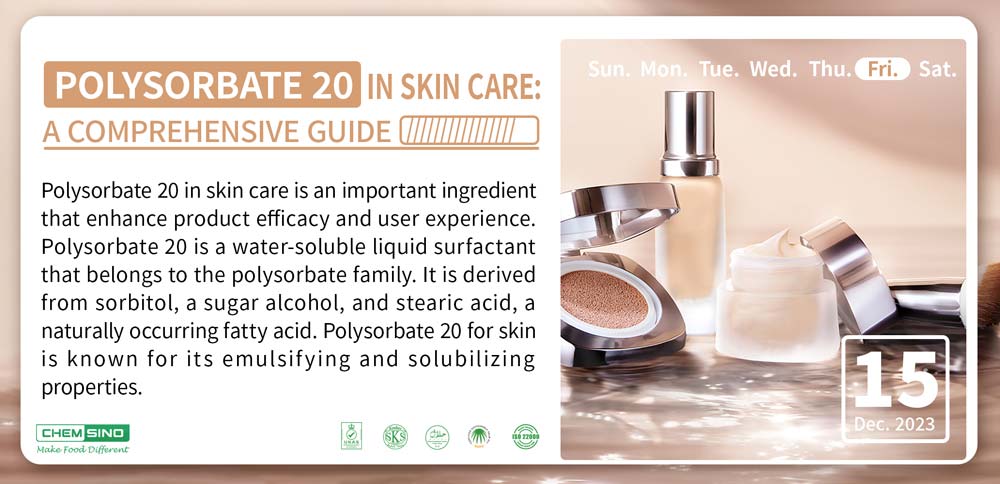PGPR (Polyglycerol Polyricinoleate), known as E476 in the EU, is a versatile emulsifier widely used in the chocolate industry to improve processing efficiency, texture, and overall quality of chocolate products. Let's explore the various aspects of PGPR in chocolate production, including its uses, benefits, regulatory considerations, and frequently asked questions.
What is PGPR (E476)?
PGPR is derived from glycerol (a sugar alcohol) and fatty acids, primarily sourced from castor beans. Through chemical processes, these components are combined to form polyglycerol esters of polycondensed fatty acids from castor oil, creating PGPR. This emulsifier is typically a light-colored, viscous liquid with excellent emulsification properties.
In chocolate production, PGPR serves as an emulsifier to stabilize the mixture of cocoa solids and cocoa butter, which are the main components of chocolate. This helps prevent the separation of cocoa butter from other ingredients and ensures a smooth and consistent texture in the final chocolate product. Additionally, PGPR aids in reducing the viscosity of chocolate, making it easier to handle during processing such as molding, coating, and enrobing.
.jpg)
Uses of PGPR in Chocolate
1. Texture Improvement: One of the primary uses of PGPR in chocolate is to improve texture. It helps in reducing the viscosity of chocolate, ensuring smoother flow during molding, enrobing, and coating processes.
2. Fat Reduction: PGPR facilitates the reduction of cocoa butter content in chocolate formulations without compromising on taste or texture. This can be beneficial for cost-effective production and achieving desired fat profiles in chocolate products.
3. Crystallization Control: By influencing the crystallization of cocoa butter, PGPR promotes the formation of smaller and more stable cocoa butter crystals. This leads to enhanced snap, glossiness, and texture in finished chocolate products.
4. Tempering Assistance: During the tempering process crucial for chocolate making, PGPR aids in achieving the desired crystal structure. It helps prevent issues such as blooming (fat migration) and ensures uniformity in chocolate appearance and texture.
5. Compatibility: PGPR is compatible with other emulsifiers like lecithin. When used together, they synergize to improve emulsion stability, ensuring consistent quality across chocolate batches.
Benefits of Using PGPR in Chocolate
1. Improved Processing: PGPR enables smoother processing of chocolate, reducing production challenges related to viscosity and flow properties.
2. Enhanced Texture: The controlled crystallization facilitated by PGPR results in chocolates with superior texture, snap, and gloss.
3. Cost Efficiency: By allowing for reduced cocoa butter content while maintaining quality, PGPR contributes to cost-effective chocolate production.
4. Consistent Quality: PGPR's emulsification and crystallization control properties help maintain consistent chocolate quality and appearance across production batches.
5. Regulatory Approval: PGPR has received regulatory approval as a safe food additive, providing assurance of its safety and suitability for use in chocolate and confectionery products.
 In Chocolate.jpg)
Is PGPR Safe to Eat?
Yes, it is safe. PGPR has been approved for use as a food additive by regulatory agencies such as the FDA (Food and Drug Administration) in the United States and the EFSA (European Food Safety Authority) in the EU. It is considered safe for consumption within specified limits and undergoes rigorous safety assessments before approval for food applications.
FAQs About PGPR
1. Is PGPR Halal?
Yes, it is. PGPR (Polyglycerol Polyricinoleate) is generally considered halal for consumption by Muslims as it is derived from plant-based sources such as soybean or castor oil, which are permissible according to Islamic dietary guidelines. However, halal certification for PGPR may vary, so consumers seeking halal products should look for trusted halal certification labels or consult with relevant authorities to ensure compliance with halal standards.
2. Is PGPR Kosher?
Yes, PGPR (Polyglycerol Polyricinoleate) can be considered kosher if it is derived from kosher-certified vegetable oils such as soybean or castor oil and manufactured in compliance with kosher standards, including proper certification from recognized kosher certification agencies. Consumers looking for kosher products should check for kosher certification symbols on packaging or consult kosher certifying agencies for verification.
3. Is PGPR Natural?
No, PGPR (Polyglycerol Polyricinoleate) is not considered a natural ingredient due to its synthetic production process involving chemical reactions with glycerol and fatty acids derived from vegetable oils. While the raw materials may be sourced from natural sources like soybean or castor oil, the manufacturing process results in a synthetic emulsifier. For those seeking natural ingredients, alternatives such as lecithin or plant-based emulsifiers may align better with their preferences. It's important for consumers to review product labels for transparency regarding the nature and source of emulsifiers like PGPR in food products.
4. Is PGPR Vegan?
PGPR (Polyglycerol Polyricinoleate) is generally considered vegan as it is derived from plant-based sources like soybean oil or castor oil, devoid of animal products. However, individuals adhering strictly to vegan principles may want to confirm the production process with manufacturers to ensure alignment with vegan standards.





.jpg)
 In Chocolate.jpg)



